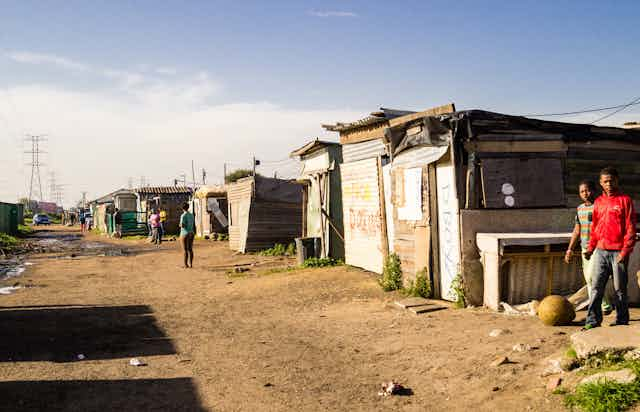Fourteen years ago South African researchers first picked up rising rates of high blood pressure in the population that led to people dying earlier than expected.
But it wasn’t in the bustling urban metropolis of Johannesburg in South Africa’s economic hub where this cardio-metabolic disease epidemic was first found. The trends – that people were increasingly dying from stroke – were picked up in one of the country’s most rural sub-districts.
The findings contributed to South Africa’s National Department of Health drawing up a policy to introduce “integrated” primary health care. And through this policy, chronic conditions such as high blood pressure can be tested and treated at the clinics set up primarily to provide antiretrovirals to HIV positive people.
The discovery was not coincidental. It emanated from work done in a health and demographic surveillance system set up in 1992 in Bushbuckridge, Mpumalanga. The site is run jointly by the South African Medical Research Council and Wits University’s Rural Public Health and Health Transitions Research Unit.
The project collects population and health and socio-economic data on communities in an impoverished and developmentally constrained part of the country over a long period of time.
Health and demographic surveillance systems like these help researchers understand how factors around health, social and economic wellbeing affect people and the societies that they live in.
These systems are an important part of advanced population registration systems. And nations with complete systems are the world’s most developed. A key reason for this is that they can determine if services are meeting the needs of the population.
The site in Bushbuckridge is one of three surveillance systems running in South Africa. The other two sites are in rural Limpopo: Dikgale at the University of Limpopo, and the Africa Health Research Institute in rural KwaZulu-Natal. These sites collectively follow a population of about 300 000 people.
The data being collected is expected to provide deep evidence-based insights into major health and socio-economic challenges facing the country which in turn will enable the government to design and evaluate targeted, evidence-informed policy solutions.
Giving government a heads-up
When surveillance systems work well, the information that is collected forms part of the national statistics platform of the country. It helps researchers understand detail and dynamics that they are unable to derive from a census.
This is because censuses are only able to see people at one point in time. Surveillance systems can provide detail on changing patterns and the processes affecting these changes. Together, the surveillance system data and census data give policymakers a sound basis to evaluate policies that are not working.
Surveillance system data provides deep and granular insights into the health and wellbeing of a community. They help governments understand the changing dynamics of a particular population. This, in turn, helps them understand what sort of interventions are needed. Here are some examples:
Data will give a better idea of how and why people move between rural and urban areas and insights into what health and socio-economic services they are getting or being excluded from.
Tracking the number of pregnancies can provide valuable information about whether or not there are adequate maternal health and family planning services in place.
Looking at why people are dying is important to understanding if health services need to be adapted or preventative services strengthened.
Understanding how people’s levels of education and socio-economic status affect their wellbeing.
Falling through the cracks
Surveillance systems do have challenges. One is that the data come from specific geographic locations. Researchers can’t easily tell what happens beyond these boundaries.
This is why it’s important to have surveillance systems in both rural and urban settings so that researchers can understand livelihoods and monitor bi-directional, migration flows linking poor, rural communities with urban centres.
With investment from the Department of Science and Technology, data and data systems from the current three centres are being harmonised, and four more surveillance systems are being set up. Three will be in urban settings in Gauteng, eThekwini and the Western Cape and one in a rural setting in the Eastern Cape. This harmonised network is called the South African Population Research Infrastructure Network (SAPRIN), which is hosted by The Medical Research Council
The full SAPRIN platform will include 550,000 people –- around 1% of South Africa’s census population. The platform will form a network that will be able to generate high-quality evidence to respond to some of South Africa’s biggest issues, which include poverty, inequality, unemployment, education and poor access to effective health care.
It will do this by linking to the public sector’s health system records as well as public school attendance registers and have access to the statistics around social grants. This will help researchers understand how people are using the services that the government has made available.
The bigger picture
Inadequate or even misleading evidence for planning is a complex problem in all countries, but especially low and middle-income countries. It arises due to limitations in infrastructure, especially in poorer parts of the country, and the costs involved for people registering key events in their lives.
South Africa is not the only country in the developing world to have surveillance systems like this. The three surveillance sites in South Africa are part of a network of 37 health and demographic surveillance system sites in sub-Saharan Africa, comprising the INDEPTH Network
A combination of national census, vital registration and localised health and demographic surveillance data can be expected to fill the evidence gap in developing countries.
This will enable planners to have immediate and longer-run feedback on the impact of policies and programmes designed to improve health care and socio-economic status.
For this reason, we can expect to see more investment in surveillance over time and a bigger push to combine datasets to understand what is going on and what is needed.

